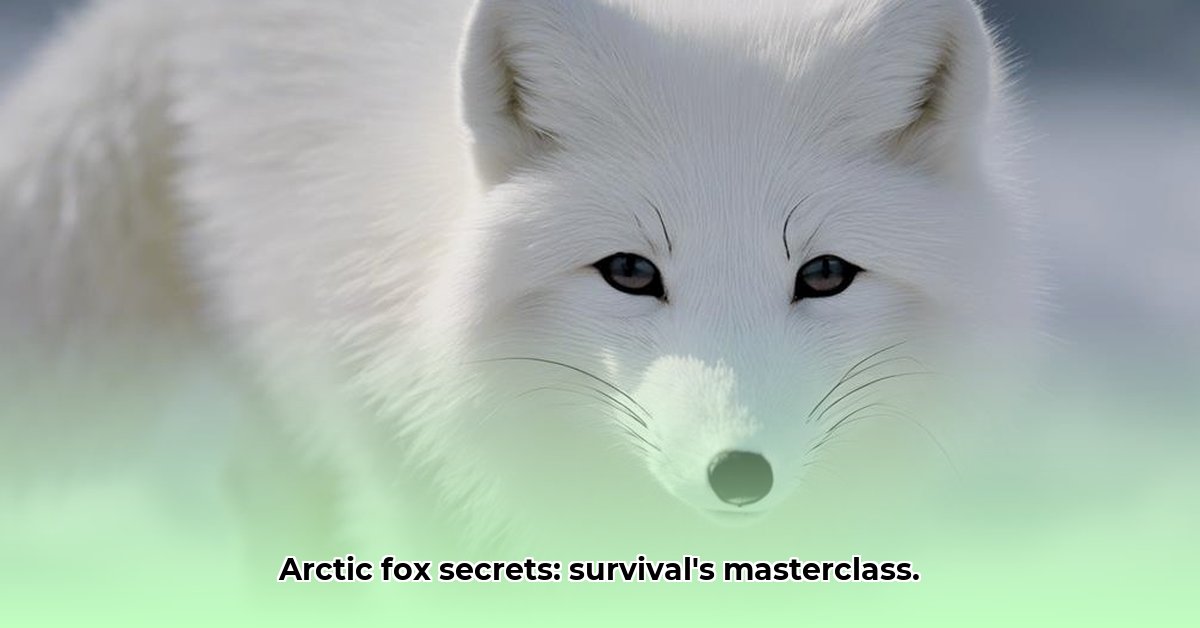
Arctic Fox: A Master of Disguise in the Arctic Wilderness
The Arctic, a land of stark beauty and unforgiving conditions, is home to a remarkable creature: the Arctic fox ( Vulpes lagopus). This small carnivore thrives in one of the planet's most challenging environments, largely due to its exceptional camouflage abilities. Its survival hinges on seamlessly blending into its surroundings, a feat achieved through a combination of ingenious physical adaptations and clever behavioral strategies. How does this small mammal achieve such remarkable camouflage, and what does it reveal about the delicate balance of life in the Arctic? Learn more about the science of its stunning white winter fur here.
A Fur Coat That Changes With the Seasons: Nature's Perfect Disguise
The Arctic fox's most striking adaptation is its remarkable fur. In winter, it dons a breathtaking cloak of snow-white fur, virtually disappearing against the pristine white landscape. This dazzling camouflage is crucial for both predator avoidance and successful hunting. It allows the fox to silently stalk unsuspecting prey, such as lemmings and hares, while simultaneously remaining unseen by predators like Arctic wolves and snowy owls. "The winter coat is incredibly dense, providing not only excellent camouflage but also superior insulation against the extreme cold," explains Dr. Anya Petrova, a wildlife biologist at the University of Alaska Fairbanks.
But the Arctic fox's camouflage is not static; it's a dynamic adaptation to the changing seasons. As summer approaches, the snow melts, revealing the barren, rocky terrain of the tundra. In response, the fox undergoes a stunning transformation. Its winter white fur is shed, replaced by a mottled coat of browns and grays perfectly matching the summer landscape. This seasonal change is not merely cosmetic; it's an essential survival mechanism. A bright white fox would be easily spotted against the brown and green summer vegetation, making it highly vulnerable.
Beyond the Fur: Behavioral Camouflage
The Arctic fox's camouflage is not solely dependent on its fur; its behavior plays a critical role. These foxes are masters of stealth, moving with remarkable grace and quietude. They skillfully utilize the natural terrain for cover, using dips and bumps in the landscape to remain hidden from both predators and prey. "Their ability to blend seamlessly into their surroundings is a testament to their evolutionary prowess," states Dr. Ben Carter, a behavioral ecologist at the Norwegian Polar Institute.
Furthermore, the Arctic fox exhibits opportunistic feeding habits, often scavenging near the kills of larger predators. In this context, behavioral camouflage becomes crucial. The fox avoids drawing unwanted attention while skillfully accessing food resources in close proximity to potentially dangerous animals. This illustrates a sophisticated understanding of its environment and its place within the Arctic food web.
The Genetic Code of Camouflage: Understanding Adaptation
The Arctic fox's remarkable camouflage is not accidental; it's the product of millions of years of evolution. The precise genetic mechanisms behind the seasonal fur color change are currently under intense scientific scrutiny. "We are actively investigating the genes responsible for the color change," says Dr. Eva Schmidt, a geneticist at the University of Copenhagen. "Understanding this process could unlock valuable insights into adaptive evolution and the impact of environmental change." The summer coat's dappled pattern disrupts the fox's outline, making it harder for predators and prey to distinguish its shape against the uneven tundra.
Climate Change's Impact on Camouflage: An Uncertain Future
Climate change is presenting a new and significant challenge to the Arctic fox's survival strategy. Changes in snowfall patterns and the timing of the seasonal shift can drastically reduce the effectiveness of its camouflage. Shorter winters and earlier snow melts can leave the fox with a white coat against a brown background, increasing its vulnerability during crucial periods. "The changing climate is potentially disrupting the finely tuned balance between the fox's adaptations and its environment," warns Dr. Petrova. Research is urgently needed to assess the full extent of these impacts.
Protecting the Arctic Fox: A Call to Action
The Arctic fox's remarkable camouflage strategies highlight the intricate relationship between a species and its environment. This small creature's survival depends on the delicate balance of the Arctic ecosystem. By understanding these astonishing adaptations, we gain a deeper appreciation for the resilience of life in the Arctic and the importance of conservation efforts to mitigate the impact of climate change. The continuing study of Arctic fox camouflage remains scientifically fascinating and crucial for its conservation.
Key Takeaways:
- The Arctic fox utilizes a dynamic camouflage system, adapting its fur color and density with the change of seasons.
- Behavioral strategies, such as utilizing the terrain for cover and opportunistic feeding, complement their physical camouflage.
- The genetic mechanisms behind the fur color change are actively being researched by scientists.
- Climate change poses a serious threat, disrupting the effectiveness of the fox's camouflage and enhancing its vulnerability.
- Conservation efforts are crucial to protecting the Arctic fox and its habitat.